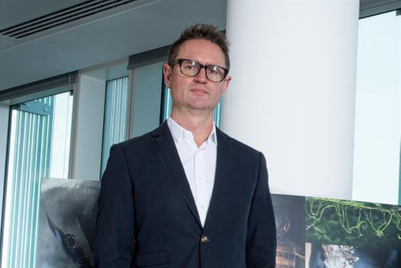He noticed something about New York pizza shops.
The shops that were doing the best trade weren’t the ones that were selling whole pizzas.
They were the ones just selling slices of pizza at $1 a slice.
During the day, most people didn’t have time to eat a whole pizza.
They’d just grab a slice and get on with whatever they were doing.
So Wartman decided he would move back to Philadelphia and open a dollar-a-slice pizza joint there.
And, in 2013, that’s what he did.
He opened a pizza shop in Philadelphia and called it Rosa’s.
Shortly after he opened it, a strange thing happened.
A customer bought a slice of pizza, then asked if they could pay it forward.
Wartman asked what they meant.
They said they’d like to buy a slice of pizza for someone who couldn’t afford it, a homeless person.
Wartman said OK.
He took the dollar and let the guy stick a Post-it note on the wall, saying it was a voucher for a slice of pizza for a homeless person.
Another customer saw the note and asked what it was.
Wartman told him, and that person paid a dollar and wrote a Post-it note/voucher for the wall too.
Pretty soon, homeless people began reading the notes on the wall and redeeming them for slices of pizza.
And more people began paying a dollar to leave Post-it notes on the wall for slices of pizza for the homeless.
People began writing "You can do it" and "You are beautiful" on their notes.
And the entire wall filled up with different-coloured notes.
And the homeless came to sit in the warm and eat a slice of pizza.
In that one store, Wartman is feeding dozens of homeless guys a day.
So far, he’s given them around 10,000 slices of pizza.
But the real beauty is he hasn’t actually given anything away.
Everybody wins, because every slice of pizza has been paid for by another customer.
Wartman is using people’s benevolence as a part of his business model.
As he says: "People told me they wanted to help but didn’t know how. Now they can help."
On the wall, the homeless write their own messages in return.
One person wrote: "A slice of hot pizza is a big deal to me. This way, I know I’ll get one hot meal a day. Thank you."
Another person wrote: "I usually get treated rudely when I ask for help. Rosa’s treats me with respect. Thank you."
And another person wrote: "I want to thank everyone that donated to Rosa’s and gave me a place to eat every day and the opportunity to get back on my feet. I start a new job tomorrow. Thank you."
The beauty of it is everyone wins.
People who need food get food.
People who want to help have a way to help.
The person who has to run a business still makes money.
And the homeless are treated as paying customers, instead of bums looking for a handout.
When you set the game up right, everyone wins.
Dave Trott is the author of Creative Mischief, Predatory Thinking and One Plus One Equals Three
(The article first appeared on CampaignLive.co.uk)










.png&h=268&w=401&q=100&v=20250320&c=1)

